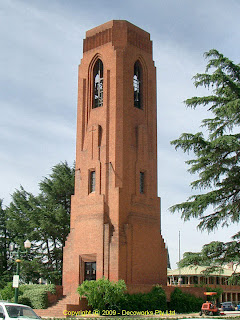The Hotel Gearin at 1-1a Goldsmith Place (off Great Western Highway) in Katoomba was established in 1881 with additions being made in 1919 and 1927. It is a beautiful example of the interwar Art Deco period. Originally built by George Biles, the Hotel Gearin was bought and named in 1910 by one Mrs Gearin who operated it as a guest house for women. It is said her ghost still haunts the building. The centrepiece of the hotel is its classic Australian “Long Bar” of the period. The Hotel Gearin was bought by Australian actor Jack Thompson in 2006 and it was a popular live music venue. In 2011 Thompson decided to sell the Hotel Gearin because it wasn't becoming the social hub he imagined./p> Facade detail More facade detail In 2019 the hotel bars were closed, so it is no longer operating as a pub, but is still offering affordable short-term accommodation. Since the "Gearin Hotel" is no longer the local watering hole we are now calling it simply "The G











